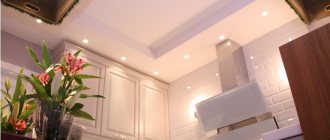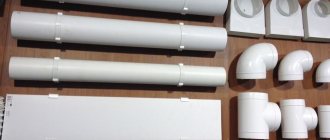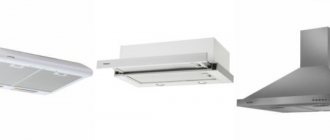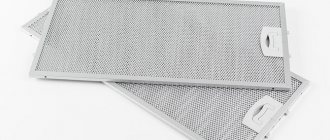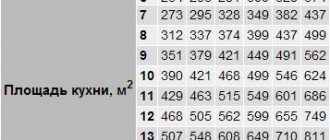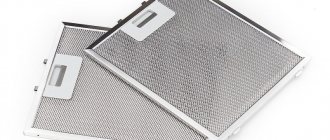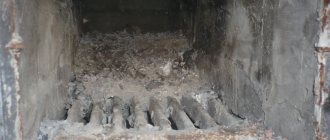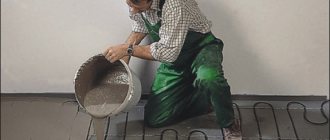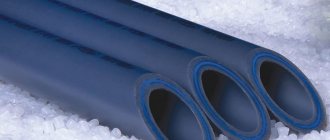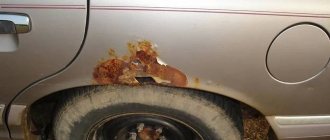Corrugation for hood: application
The corrugation is an element that acts as a corridor for the removal of steam and fumes during cooking. Externally, it is a flexible corrugated pipe, round or rectangular in shape. A corrugated air duct for the hood connects the hood itself and the ventilation shaft.
In what cases is corrugation used:
- Installation of a hood with a ventilation system outlet.
- When installing gas equipment.
- For industrial and domestic purposes for laying cables.
Related article:
Professional advice: how to choose a hood for the kitchen. In our review you will find out which type is suitable for a particular interior. And detailed photos and video instructions will make this choice easier, clearly showing what you should pay attention to and what is not too important.
Types of air ducts
As already mentioned, the operation of the exhaust device is impossible without a specialized air duct. There are several types of exhaust pipes, differing from each other in many parameters, but the main difference is expressed in the material that was used in their manufacture.
In addition, they may differ from each other in the following characteristics:
- duct length;
- one diameter size;
- section shape (rectangular, round or flat);
- in terms of flexibility.
How to choose an exhaust duct? To answer this question, it is worth taking a closer look at the differences between exhaust pipes made from different materials.
Aluminum
Aluminum ducts are the most common option used to design a forced ventilation system. Their cross-section can be either round or rectangular.
The main advantages of such structures include:
- ease of installation - aluminum air ducts are easy to cut and bend;
- absence of resonant noise;
- Regarding exhaust pipes made of plastic, aluminum ones are sold at a fairly affordable price;
- camouflage – aluminum pipes are quite easy to camouflage, thereby preserving the aesthetic interior of the kitchen.
Plastic
Plastic air ducts, like aluminum ones, can be produced with a rectangular or round cross-section. Expert opinions on which cross-sectional shape is most suitable for designing a forced ventilation system often differ. Some people think that it is better to use square plastic air ducts, since they will not fit well into the design of the room, while others, on the contrary, prefer round ones, since their performance is much higher.
The main advantages of plastic air ducts are as follows:
- almost complete absence of noise;
- high versatility - plastic exhaust pipes do an excellent job of removing both odors and moisture;
- long service life - the minimum service life of a plastic air duct is at least ten years;
- plastic does not require additional maintenance and care;
- low weight allows you to install an air duct of this type without the use of additional structures.
Corrugated
Corrugated air duct can be made from either plastic or aluminum. Previously, galvanized steel was used for its production, but now this material is used less and less.
The main advantage of a corrugated exhaust pipe is its flexible channel. It allows you to lengthen or shorten the pipe, bend the channel for turns without using any additional materials or fasteners. In addition, the corrugated air duct is lightweight, which also greatly facilitates its installation procedure.
Types of corrugated pipes for ventilation and their characteristics
The durability and efficiency of the corrugation depends on the material of manufacture. They come in three types: plastic, aluminum and steel.
Plastic corrugation for ventilation - the cheapest and most stylish pipe
Plastic models are made of polyvinyl chloride or polyethylene. These corrugations are the cheapest of all three types. Among the advantages are the presence of convenient connecting elements, a huge selection of size options, ease of installation, and light weight.
There are also disadvantages. Plastic corrugations for hoods are not recommended for use in high heat. In rare cases, they may melt.
Some models of plastic corrugations have stiffening ribs
Aluminum corrugated air duct - an option for aesthetes
Unlike plastic structures, aluminum corrugation is not afraid of high temperatures and does not corrode.
Aluminum corrugation easily changes its shape, is easy to install, and does not require additional protection from overheating
Among the obvious disadvantages are some vibration and noise during operation.
Steel corrugated pipe for exhaust: ideal, but not a budget option
There are options for corrugated hoods with a galvanized coating. These models are more durable, however, they are somewhat more expensive than aluminum structures.
With such a corrugated hood you will forget about problems with the ventilation system for a long time
What materials are corrugated pipes made from?
The main materials for such products are plastics (PVC), aluminum and stainless steel. We have already mentioned the use of the first two types, but stainless steel air ducts are used mainly for removing flue gases from heating units.
Watch the video
Corrugated air duct
This is due to its ability to withstand high temperatures - up to 600 degrees. Naturally, this quality will not hurt for exhaust systems, but the price of such an air duct will be unacceptably high.
The manufacturing process of corrugated aluminum pipes is organized using high-precision equipment and modern technologies. The material for the production of such products is aluminum (stainless) tape with a thickness of 0.12 millimeters. From the reel it is wound onto a special mandrel turn to turn and laser welded. The result is a thin-walled spiral-welded pipe.
Transporting such a product is extremely inconvenient, including due to its fragile design. Therefore, the pipe is passed through another installation, on which the corrugation is rolled with a circular knife. After this, short pipes are obtained that can be easily
to transport. As we have already mentioned, a 100 mm corrugated pipe for exhaust hood is cut to a length of 65 centimeters, other sizes are cut in the same way.
During installation, such a pipe can be given a length of up to 3 meters, and the work must be done with extreme caution - the walls are easily deformed with the formation of dents. A pipe stretched to its maximum possible length is practically impossible to fold in the opposite direction if necessary.
At the same time, residual corrugation negatively affects the passage of polluted air. During long-term operation of the air duct from such pipes, plaque forms on the inner walls, which, due to the unevenness of the walls, is very difficult to remove.
It will be easier to replace them with new ones, since the cost allows you to do this without significant costs.
How to choose the correct diameter and length of a pipe for a kitchen hood
The cross section of the corrugation depends on the diameter of the ventilation shaft opening. Very often, special grilles can be purchased as a kit. The photo shows one of the possible options.
Most often, the cross-sectional diameter of the corrugation is standard - 100, 120 or 150 mm
Advice! Any kitchen hood has instructions for use. Most often, the recommended corrugation sizes suitable for your model are indicated there.
Related article:
Hood 60 cm built into the cabinet : advantages and disadvantages, types, review of popular models (Krona, Bosch, Hephaestus, Elikor, Hansa, Kaiser), self-installation, tips - in our publication.
Tip 2: How to choose a hood
Hood design
Hoods, which consist of four main components: a fan unit, an air intake, filters and a housing, differ in appearance from each other. The simplest ones are flat devices. They come in two types: built-in and wall-mounted. The latter are mounted on the wall or bottom of the cabinet above the stove. Built-in units are mounted inside a wall-mounted kitchen cabinet, so before purchasing you need to make sure that a certain model will fit into the cabinet and that the corresponding hole can be prepared in it.
The most common today are fireplace hoods, the name of which goes back to the shape of the devices. They are mounted on the wall above the stove. These models are more productive; most of them are capable of operating in air exhaust and recirculation modes. The range of many companies already includes island hoods, which are attached to the ceiling above the kitchen “island”, and corner appliances, designed for mounting in the corner of the kitchen. To decorate hoods, tempered glass, wood coated with protective varnish, artificial stone and hand-painted metal elements are used.
The most popular hoods are made of stainless steel and aluminum. Models made of polished stainless steel look quite impressive. This surface is easy to clean, but should not be cleaned with abrasives. The disadvantage of this material is that fingerprints remain on it, and manufacturers recommend caring for such products using special compounds. Aluminum units are good because their surface “adjusts” to the color of kitchen items, fitting well into the interior. In addition, aluminum hoods do not leave fingerprints.
Principle of operation
When choosing a hood, you need to decide for yourself how it will remove unpleasant odors - through air exhaust or air recirculation. Both options have their advantages and disadvantages. Most modern devices are designed in such a way that they can operate in both modes, however, if an air duct is not installed, the device can only be operated in recirculation mode.
When recirculating, the fan draws air under the umbrella and, passing it through filters, returns it back to the kitchen clean. Housewives praise such hoods for their low price and ease of installation, but they are often dissatisfied with the low performance and the need to periodically change the carbon filter. For proper operation of the hood, make sure that the air ducts purchased in the store are installed correctly.
In the exhaust mode, air is also taken in by a fan and passed through a grease filter, but does not return back, but is discharged into the ventilation shaft or outside through a special channel. This method of combating odors is more effective, but installation of the air duct is quite labor-intensive. It must be well sealed and have a special valve at the outlet that prevents cold air from entering the room from the street.
Installing corrugations on a hood - simple installation rules
Installation of corrugation is not as complicated as it might seem at first glance. Simple instructions will help you easily cope with this task.
For work we will need:
- clamps for fastening the air duct;
- the ventilation corrugation itself;
- exhaust grille, which we will install on the ventilation shaft.
Important! Each hood has a plastic flange installed at the outlet. Before purchasing a corrugation, be sure to measure its outlet diameter.
| Illustration | Description of action |
| The first stage is marking the place where you will strengthen the hood. Remember that the minimum height that is allowed when installing equipment from the work area is 75 cm. Study the location of the suspension points and the distance. | |
| We fix the device in the place allocated for it, having previously removed the filters so as not to jam them during installation. | |
| We connect one end of the corrugation to the outlet at the top of the device using a clamp. In some cases, a hood adapter can serve as a fixing element. | |
| We attach the second end to the flange that connects the air duct to the ventilation shaft. |
Advice! Remember that unnecessary turns and bends impair the draft of the hood.
Installation of a ventilation pipe for an exhaust hood: practical advice
The process of installing such a pipe involves connecting a kitchen hood and a ventilation hole in the wall to remove polluted air from the room. And in this seemingly simple matter, there are several key points.
Firstly, the hood and air duct cannot be located on the opposite side from the ventilation duct opening in the wall or ceiling.
Secondly, the pipe laying trajectory and its length are important. Ideally, it should not exceed 3 meters. And here the rule applies - the longer the air duct, the lower the efficiency of the hood. In numbers, these losses look like this: for one extra meter of pipe there is a 10% reduction in efficiency.
The number of turns of the air duct and their angle also matter. If you are installing a plastic structure, then all its bends will be made using L-shaped adapters, respectively, with an angle of 90 degrees. The same value should be adhered to when installing the corrugation.
Correct laying of a plastic pipe using an L-shaped element
And here the rule about loss of efficiency during operation of the hood is also relevant. Each 90-degree bend, if there are more than three, takes away 5-10% efficiency.
Thirdly, it is necessary to take care of natural ventilation in the room. It will simply be impossible if the air duct completely blocks the opening of the ventilation duct. This can be avoided by installing grilles with a check valve.
How it works? This grille has several holes. One of them is large - for connecting a ventilation pipe, and several others are smaller. As soon as you turn off the hood, the check valve opens and the process of natural air movement begins through these holes.
Ventilation grille with holes for exhaust and natural ventilation
How to increase the length of a corrugated pipe for exhaust hood if the dimensions do not match
It often happens that the length of the corrugation is not enough and needs to be increased. The problem is that corrugation does not withstand mechanical stress quite well. To “extend” the corrugation, we will need thin aluminum sheets approximately 5 cm wide, the length is selected depending on the diameter.
The ring is inserted into the corrugation, which must be pressed against the ring. It is important to first bend the edges of the ring inward to increase strength and prevent its deformation during compression.
The result should be some narrowing of the diameter of the corrugation, which will be enough to insert one end into the other.
The connection point can also be tightened and secured with masking tape, or twisted with copper wire
Tips for choosing the right one
A large selection of corrugated pipes leads to certain difficulties for buyers when choosing. However, there are parameters that you can pay attention to in order to make the right choice. These should include the following indicators:
- length and diameter;
- material of manufacture;
- product quality;
- cost of goods.
When choosing the appropriate diameter, you should look at the recommendations specified in the instructions for the hood. If you choose a material that deviates more or less from the declared standard, then, at a minimum, the equipment will not cope with its function. Odors, grease and soot will not be removed from the room. But another option is also possible, when the device simply burns out from overvoltage.
Depending on the external appearance of the object, as well as the features of the interior, it becomes necessary to hide the element and the surrounding fastening. If you want to add more aesthetics to the interior, a white design is suitable.
Before purchasing, you can even ask for measurements of the product you are interested in. Under no circumstances should you ignore the manufacturer's recommendations. Sometimes you can get an air duct complete with a hood. It’s good if the material turns out to be suitable and the length matches the required one. If the opposite situation arises, a person will have to independently go to the building materials market and look for a suitable solution.
We recommend that you read: Characteristics and installation of different types of ventilation pipes
Another situation may arise when a seller insists on purchasing a hood and corrugation. Here you need to show maximum attention, since not all sellers care about the client’s benefit. It is quite possible that a person is offered an expensive product or product that has been in the warehouse for a long time. Measurements will help you avoid adverse consequences. Thanks to this, you will be able to avoid buying extra meters, trusting solely in the opinion of the seller.
How to hide the corrugation from the hood in the kitchen: options
Usually the corrugation is “sewn up” or simply laid on kitchen cabinets. There are other options that we are ready to talk about.
Plastic box for kitchen hood - cheap and cheerful
One option is to use an aesthetic plastic box. However, this option “steals” usable space. They can be either plastic or metal.
“Box” made of plasterboard - the choice of experienced finishers
Drywall is one of the options for solving the problem. However, it is more labor intensive. In addition, drywall is afraid of moisture. Before using in the kitchen, plasterboard sheets must be pre-treated.
Application of kitchen furniture or suspended ceilings
A special mezzanine in the kitchen where you can hide the corrugation. Most often, such hidden cabinets are ordered simultaneously with the purchase of the entire set.
What should be the dimensions and diameter of the corrugation for the hood?
The hood has become an integral attribute of modern housewives in the kitchen. It will be very useful in summer in hot weather, as well as in winter, when opening the window for ventilation is not possible due to the cold. An integral component for this kitchen assistant is corrugation, as it does the best job of removing recycled air from the house. She has an interesting performance.
Corrugated exhaust pipe has more advantages than a regular one
Thanks to its twisting shape, installation can be done by anyone, regardless of skill level. The diameter of the corrugation for the hood exists in many variants, but it must be selected strictly for your structure to which it will be connected.
Existing types of corrugation
The corrugation with which the hood is equipped comes in two types.
- Corrugated plastic. This type has one main advantage. The fact is that the plastic corrugation has smooth walls and is characterized by silent operation. This is because its walls are as smooth as possible.
- Aluminum corrugation. This same variety is most often recommended by experienced workers and professionals due to its number of advantages. It guarantees high strength in any diameter, will work at high temperatures without the risk of fire and is distinguished by its optimized aerodynamics.
Aluminum corrugation has the highest strength
Comments regarding corrugation diameter
This is a very important point when choosing your corrugation, because it is directly related to the life of the ventilation system. If you choose the right diameter of the hood duct, this can increase the durability of the device by more than one year. There are four diameter options:
- ten centimeters (10 cm);
- twelve centimeters (12 cm);
- twelve and a half centimeters (12.5 cm);
- fifteen centimeters (15 cm).
For each hood there are special instructions that describe the recommended corrugation diameters. Why can corrugation size increase or maintain the intended service life? Because if we take a corrugation with a diameter smaller than the specified one, the fan will operate at a higher performance mode, and this can easily lead to malfunctions or complete breakdown of the hood.
Regarding the length of the corrugation, there are no warnings here; it all depends on the individual arrangement of the appliances in your kitchen. Only the number of turns or bends in the very path that provides the corrugated passage plays a role. The more there are, the worse the ventilation system will work. Also, the length of the pipe requires more fan power. Although these facts are insignificant, they are still worth taking into account.
How to install corrugation
What should an ideal corrugation look like? The answer is simple - not at all. Ideally, it should not be visible. Usually they are completely placed in a wall cabinet. Installation work is carried out without taking into account complex elements and special conductors, so installation is often carried out independently, so as not to spend extra money on the services of a specialist.
The design does not require additional connections due to its flexibility. She simply goes around any obstacle on the way to the exit. When installing, stretch the corrugation as much as possible and install it exactly in this form. This will help reduce or completely eliminate all noise generated by the hood fan. If this is not done, unnecessary folds will appear, which will subsequently cause noisy, annoying vibration.
Clamp - a device necessary for fastening the corrugation
The corrugation is attached to the ventilation system pipe using clamps, which can also be either plastic or aluminum.
To avoid any mistakes during installation, read the following simple rules and sequence of actions.
- If the ventilation hole is located at a considerable distance from the hood, then place the corrugation directly under the ceiling. The result of the work performed will be the efficiency and reliability of the structure, because in this way you will avoid all sharp corners and unnecessary bends. Since we already said above that the best option for placing the corrugation would be to hide it, then suspended ceilings are also suitable for this. She will hide behind them perfectly and will not once again remind you of her existence.
- Again, carefully and correctly select the diameter, do not make it too narrow so as not to burden the fan. It is also not recommended to install a corrugation with a larger diameter or a rectangular one on a round hole outlet. After all, no one needs additional labor, which can and should be avoided, and such an installation will entail the installation of special adapters, which also require spending money.
The procedure for installing an exhaust pipe: installation details, tools and materials
It is better to purchase all materials together with corrugation, which will allow you to make the right choice in size and quantity. Before you go to the store, you should take control measurements. It is better to select a corrugation of such a size that the structure can be easily camouflaged. The most convenient option for placing an air duct is when it is completely hidden under a suspended ceiling, panels or in a closet.
To connect the pipe joints you will need aluminum tape
Helpful advice! If the purchased pipe turns out to be shorter than the required length, it can be increased by connecting it to a section of another pipe. To do this, the parts are connected with metal tape. It should be remembered that the fewer connections, the higher the reliability of the design, since each adapter provides additional resistance to flow.
Connecting a corrugated pipe to the hood on one side and to the ventilation duct on the other is a job that even a novice master can do. To organize the process, it is necessary to prepare additional materials and tools in advance. To work you will need:
- corrugated pipe of appropriate diameter and length;
- 2 clamps;
- aluminum tape;
- grille with check valve;
- silicone based sealant;
- adapters (if it is necessary to connect a round pipe with a square or rectangular inlet on the hood);
- Adapters of smaller or larger diameter are purchased only in cases of extreme necessity, when the required size is not found, otherwise this will reduce the performance of the hood.
To connect the corrugated pipe to the hood socket you will need a silicone-based sealant
Before starting installation work, it is advisable to clean the ventilation duct and check the draft. This can be done by placing a piece of paper over the hole. If it is held by attraction, then installation work can begin. The presence of reverse draft not only reduces the efficiency of the entire ventilation system several times, but can also pose a health hazard.
Installing corrugation on a hood: preparation and important details
To ensure reliable and long-term operation of the ventilation system, a number of important points must be taken into account before installation and during the installation process. If the diameter of the corrugated pipe does not correspond to the exhaust outlet, then it is better to purchase a wider corrugation and connect it to the device with a special adapter. This method will have a positive effect, since increasing the diameter will help reduce the air flow speed, thereby reducing the noise in the pipe.
Even before installing the corrugation, a special layer with a grille, flange and return valve is installed in the opening of the ventilation system. This will prevent the pipe from completely blocking the hood. The lattice partition will provide natural ventilation of the room, and the flange will provide forced ventilation. This way, the kitchen air will constantly circulate and be refreshed regardless of the operation of the hood. If there is another ventilation hole in the kitchen, you can attach the pipe to one of them tightly, and equip the other with a grille.
Scheme for installing a corrugated pipe on a hood with dimensions
The corrugation is fixed using special clamps made of metal or plastic. Glue or sealant should not be used to shrink the pipe, as this will make it impossible to further dismantle the pipe for cleaning or replacement.
When installing the structure, you need to make sure that there are as few turns with corners as possible, as this impairs the operation of the system. Each sharp corner reduces production capacity by approximately 10%. Therefore, the hood should be located as close as possible to the ventilation hole.
Helpful advice! You should buy an air duct after purchasing a hood. It is this equipment that is the starting point in determining the diameter of the pipe, and the correct choice will affect the efficiency and quality of the entire system.
How to install corrugation on a kitchen hood: stages of work
Installation of corrugation involves certain stages and a clear sequence of work, which include:
After connecting the hood and the corrugated pipe, you must use a clamp to secure it
- Drawing up a diagram and creating a drawing with markings. The design is carried out taking into account the placement of kitchen furniture and other additional equipment. The project clearly conveys the entire trajectory of the future air duct and allows you to calculate the exact amount of materials needed.
- Adjustment of corrugations and other elements to the appropriate dimensions specified in the project. If necessary, cut the pipe with scissors or a hacksaw.
- Installation of a universal size gearbox on the hood neck. The device will help to install pipes of different diameters. The best option for a kitchen ventilation system is a 120 mm corrugated hood.
- Connection of a finned pipe with a hood socket. The gearbox is fixed with sealant, a sleeve is put on it and secured with a clamp with a special screw.
- Stretching the corrugation to the required length and forming its trajectory.
- Fixing the ventilation duct to the wall. Special brackets with clamps should be installed every meter of pipe length. This step is necessary if the ventilation duct is located at a considerable distance from the hood. This measure will prevent rocking and excessive vibration of the pipe during operation of the exhaust system.
- Installing a grille on the ventilation hole. A prerequisite is the presence of a flange and a check valve on it. It is fixed with self-tapping screws.
- Connection of corrugation with grating. To do this, the pipe is inserted into the flange, and the joint is secured with a clamp.
- Connecting the hood to the network and checking the operation of the ventilation system.
If the pipe needs to be adjusted to the required size, it is cut with a hacksaw or scissors.
Features of connecting exhaust pipes to each other
Ideally, the ventilation duct should be located at a distance of up to 2 m from the hood. Otherwise, the efficiency of the exhaust device is reduced, which requires the purchase of more powerful and, accordingly, expensive equipment. If a close distance to the well is not possible, then it is recommended to resort to the option of extending the pipe.
The simplest and at the same time most reliable way to connect several pipes to each other is the method using aluminum tape. To do this, point-to-point joining of the edges of the air ducts is carried out and the junction is fixed with tape. The adhesive tape will ensure a reliable connection between the two parts of the pipe and protect the channel from depressurization. Finned tubes can also be connected using clamps. To do this, sealant is first applied to the edges of both parts, then they are connected and secured with a screw on the clamp.
In the case of an extended duct, it is especially important to select a hood with optimal performance. You can check it with a special device (anemometer) by installing it at the base of the pipe. In this case, the pipe and the hood socket must match, otherwise you cannot do without an adapter.
To connect several corrugated pipes, it is best to use aluminum tape
Helpful advice! Despite the fact that the corrugation is elastic, it is better to avoid excessive bends, which can negatively affect the efficiency of the system by increasing the load on the fan. The use of an inappropriately sized pipe will worsen the performance of ventilation. It is much more difficult for the hood to push air through a stroke of a smaller diameter, a narrower adapter flange and additional joints.
